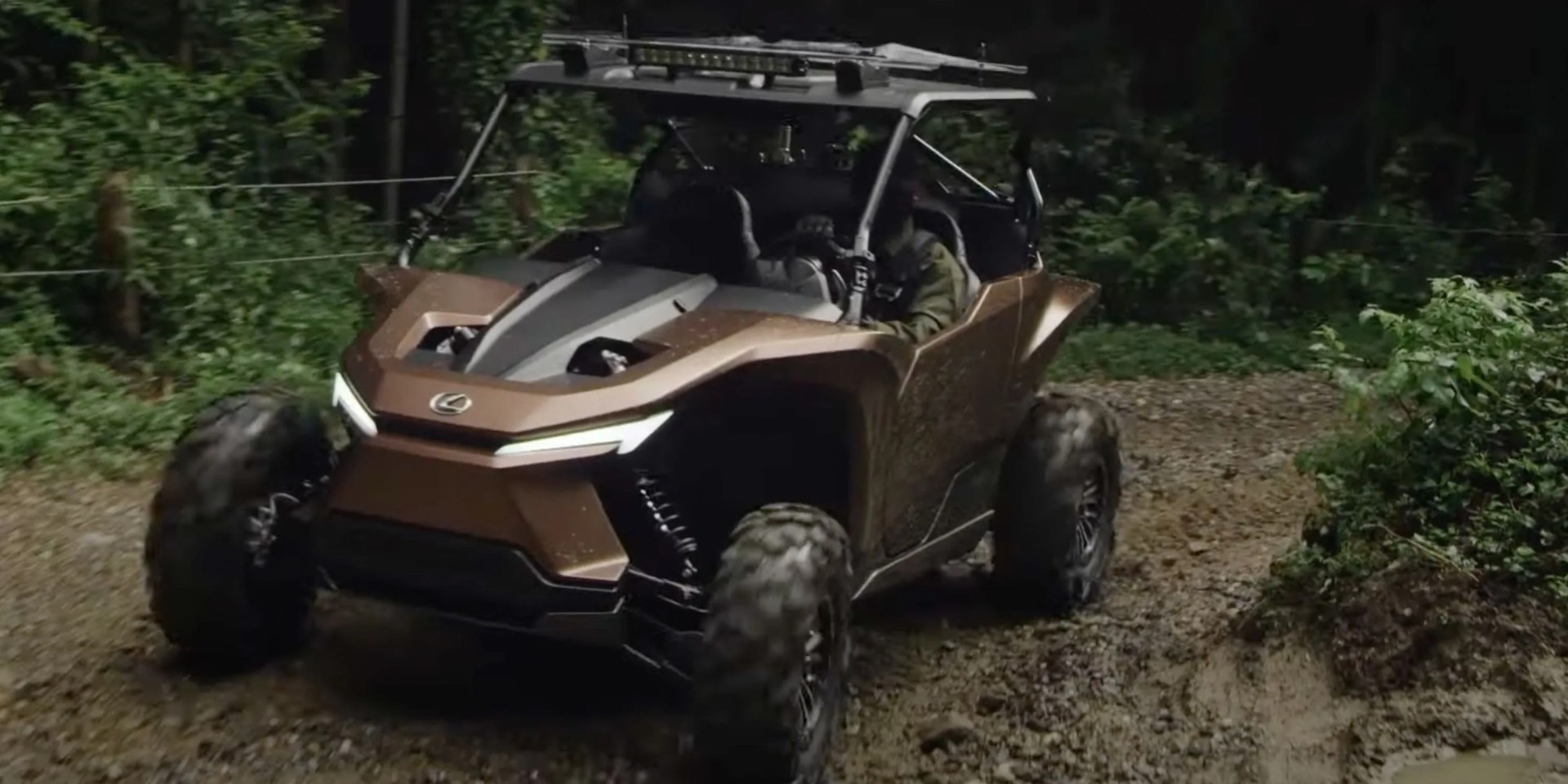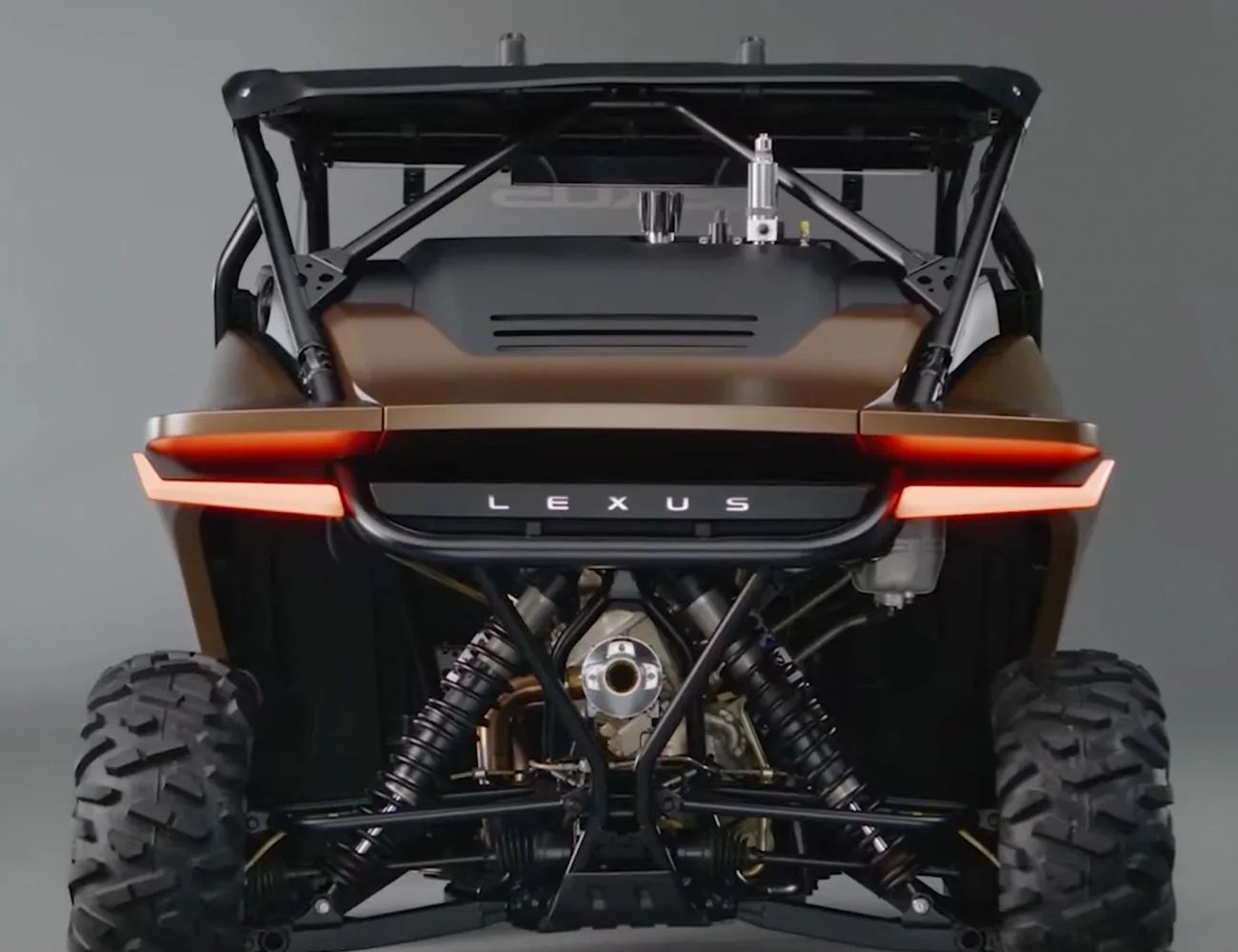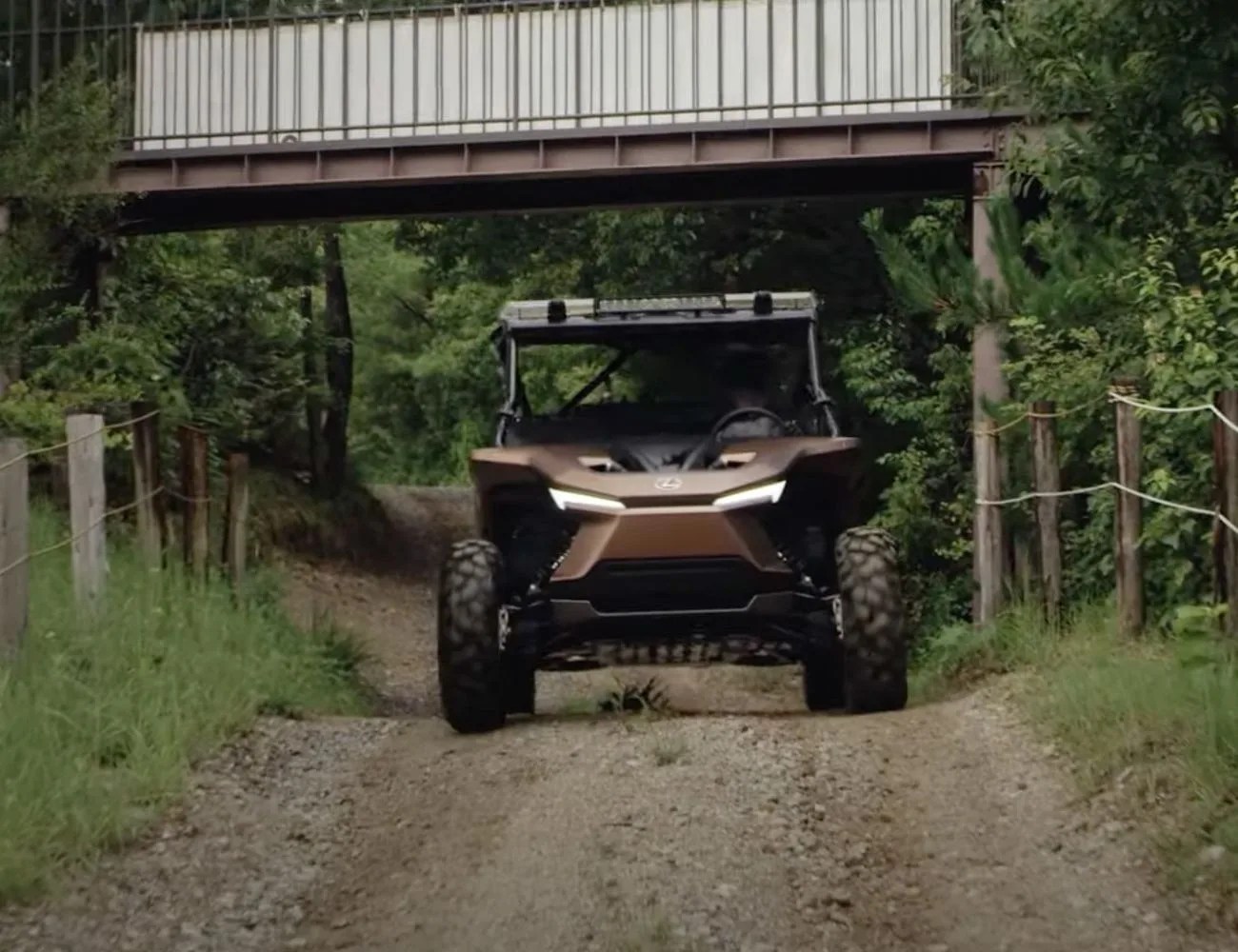Earlier this week — and after much anticipation — Lexus unveiled the new 2022 LX 600 SUV. It’s a luxurious American version of the new Land Cruiser and shares a V6 powertrain with the new Toyota Tundra pickup. The LX wasn’t a shock; it’s just about the most characteristically “Lexus” vehicle one could imagine, except perhaps the LS sedan. But Lexus also released a different vehicle you would not have expected this week.
At the end of the LX announcement video, Lexus teased a new mobility concept called the “Recreational Off-Highway Vehicle,” or ROV. It’s an all-terrain vehicle — or, as we will choose to interpret it, a supremely badass golf cart — that runs on a hydrogen combustion engine. Sadly, Lexus did not include an utterly superfluous spindle grille, although the shape of the front end will certainly remind you of that shape.
 Lexus
Lexus Lexus
LexusToyota has been a (or rather, the) major proponent of hydrogen in the automotive world; it even sells a fuel-cell sedan, the Mirai. Though a hydrogen combustion engine is markedly different. A hydrogen fuel cell vehicle is an electric-motored car that generates electricity through a chemical reaction. A hydrogen combustion engine is, as the name suggests, a combustion engine that burns hydrogen instead of gas.
An ATV makes perfect sense as a showcase for hydrogen combustion. One of the technology’s most significant drawbacks for current production use is that it can’t produce as much power as gasoline combustion engines with the same size engine footprint. So a low-speed wood path cruiser could get away with far less power than a recreational on-highway vehicle.
Toyota did race a hydrogen combustion-powered Corolla at the Fuji 24 hours endurance race. But Toyota had to fill up the entire cargo bay with hydrogen storage. And even then, it had to pit for fuel 35 times in 358 completed laps.
